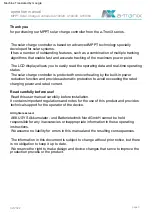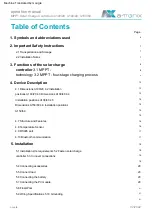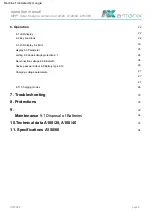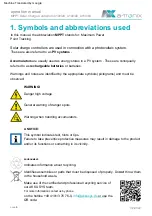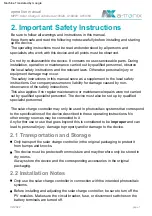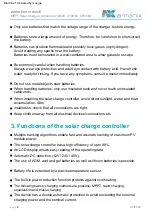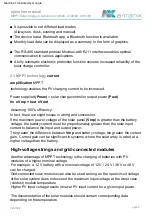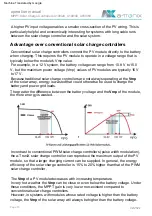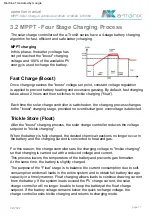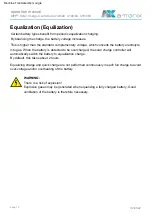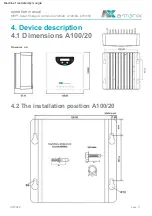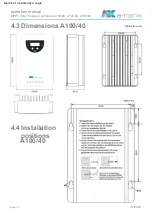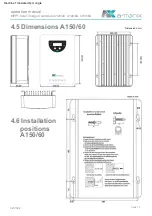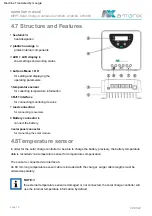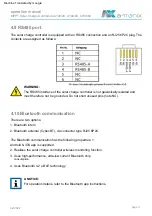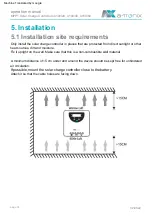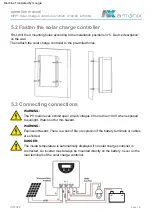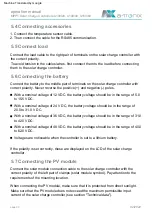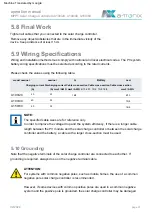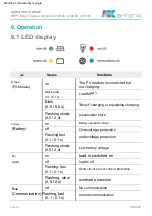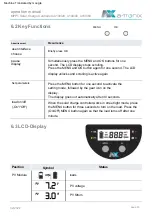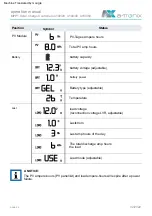
Power supplied (Pmax) = solar charge controller output power (Pout)
Grid-connected solar modules can also be used as long as the open circuit voltage
of the solar system does not exceed the maximum input voltage at the worst case
(coldest) module temperature.
3.1 MPPT technology
current
amplification MPPT
technology enables the PV charging current to be increased.
Assuming 100% efficiency.
It is possible to set different load modes.
For example, a 12 V battery with a nominal voltage of 12 V / 24 V / 36 V or 48 V
can be charged.
The documentation of the solar modules should contain corresponding data
depending on the temperature.
Iin x Vmp = lout x Vout
Higher PV input voltage results in lower PV input current for a given input power.
If the maximum power voltage of the solar panel (Vmp) is greater than the battery
voltage, the battery current must be proportionately greater than the solar input
current to balance the input and output power.
Monthly load data can be displayed as a summary in the form of graphics.
(Always on, dusk, evening and manual).
In fact, there are slight losses in wiring and conversion.
Another advantage of MPPT technology is the charging of batteries with PV
modules of a higher nominal voltage.
A fully automatic electronic protection function ensures increased reliability of the
solar charge controller.
The greater the difference between Vmp and battery voltage, the greater the current
gain. Current gain can be significant in systems where the solar array is rated at a
higher voltage than the battery.
The RS-485 standard protocol Modbus with RJ11 interface enables optimal
communication in various applications.
operation manual
page 9
02/2022
High-voltage strings and grid-connected modules
The device has a Bluetooth app, a Bluetooth function is available.
MPPT Solar Charge Controllers A100/20, A100/40, A150/60
Machine Translated by Google



